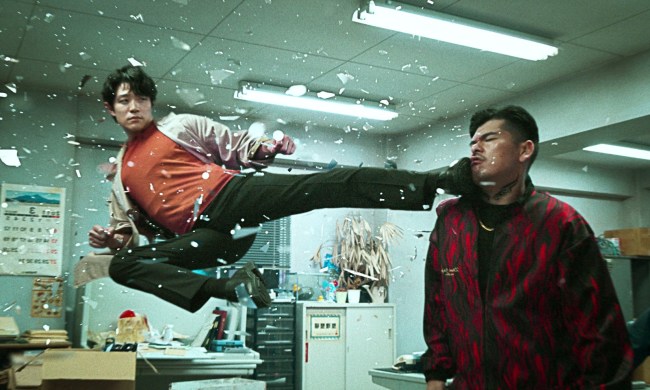One of my earliest memories, from when I was four or five years old, is seeing a cardboard display case decked out with pristine copies of Tim Burton’s 1989 Batman movie, complete with the iconic bat symbol logo and striking yellow plastic packaging. This was my personal introduction to the world of VHS, a.k.a. the Video Home System. But due to the year I was born, I was also what some might call a member of the late majority — or even a laggard.
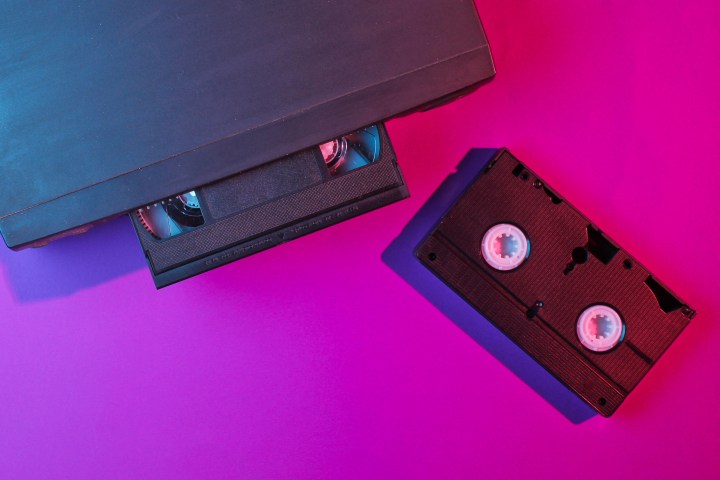
For those true early adopters, at least in the United States, the first glimpse at the VHS video player and cassette took place at a press conference prior to the annual Consumer Electronics Show (CES) in June 1977. That month — the same one in which the Apple II computer went on sale, Oracle Corporation was founded, and Elvis performed his final concert before his death – the VHS made its stateside debut and changed the way we viewed entertainment in the process.
VHS wasn’t the first home-use VCR (video cassette recorder) machine. Sony’s Betamax format had beaten VHS to market by a couple of years. But VHS, which was based on an open standard created by JVC, held key advantages that served to make it triumphant. It could record for two hours instead of one, making it capable of recording an average-length movie. It was also cheaper.
(Cheaper is, of course, relative. As a contemporary issue of Popular Science notes, the inaugural VHS Vidstar “deck” carried an asking price of $1,280 – about $6,100 today – at a time when the U.S. minimum wage was $2.30. Just as eye-watering was the price of a blank tape, which sold for $20 – the equivalent of $95 in inflation-riddled 2022 dollars.)
Here in 2022, the VHS format – which celebrates the 45th anniversary of its U.S. unveiling today — seems hopelessly outdated. Disappearing from store shelves in the early years of this century, there’s a good chance that younger readers don’t recall using or watching one at all; with VHS players appearing like some antiquated retro prop from Stranger Things.
However, what’s surprising about VHS isn’t, for those of us old enough to recall it, that it’s almost half a century old. It’s that, while it represents the end of an era for physical analog media, it also set in motion a lot about how we enjoy entertainment today. Happy birthday, VHS!
Remarkable changes
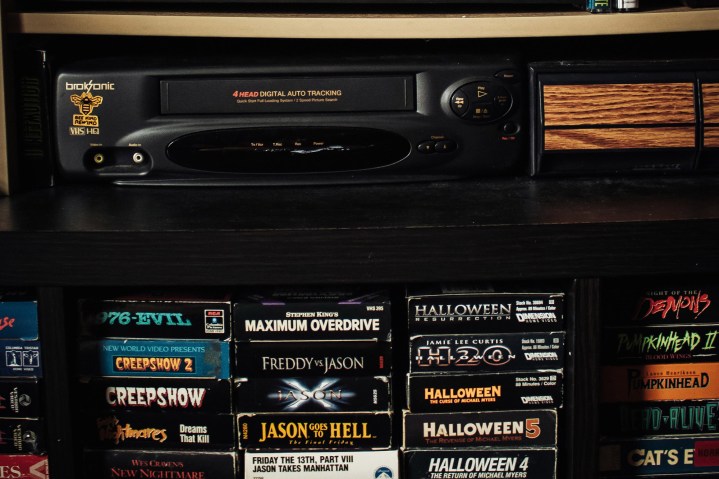
“A remarkable change has taken place in our everyday behavior, and yet, like so many things that happen under our noses, it has gone largely unnoticed. Already it is getting hard to remember how strange a device the VCR was when it first appeared, and what a commotion it caused.”
So wrote James Lardner in Fast Forward, a book charting the history of the VCR, published just one decade after the VHS arrived in America. By that point, according to figures cited in Lucas Hilderbrand’s Inherent Vice, more than 50% of households in the United States owned a VCR. That number would increase to more than 75 percent just five years later. (To put these figures in perspective, around 22.8% of the U.S. subscribes to Netflix, still the leading current streaming service.)
The rapidity of VHS’s ascension underlines the scale to which the format changed the viewing habits of a nation (and, really, a planet). Within only a few years, most consumers saw their first video cassette player, marveled over it, and then grew so accustomed to its everyday ubiquity that it was scarcely conceivable that things had ever been different. Very few pieces of technology achieve this: The internet-connected PC and the smartphone would be two others in a very small pool.
Timeshift to the max
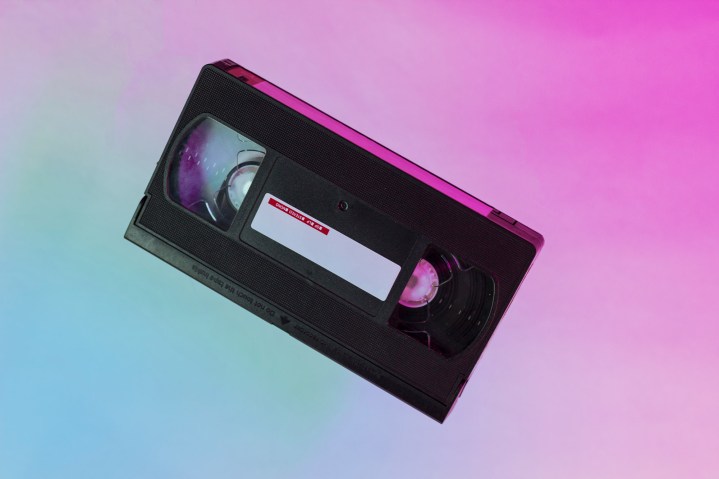
The biggest behavioral shift VHS ushered in was what was then known as “timeshift,” a phenomenon so taken for granted today that it seems totally obvious. Before VHS, the only way to watch a movie or TV show was to watch it when it was available. For a movie, that meant seeing it in the theater when it was released – and maybe once more when it got a TV showing. If you wanted to see it again, well, tough: Buy the movie novelization.
VHS changed all of this. You could rent or buy a videotape and watch it when and where was convenient to you. If it was on television (where the term “timeshift” was most commonly applied), you could set your VCR to record it, and then view it at an hour that suited you.
Basic Instinct at 9 a.m. on a Monday morning? Of course. Good Morning America in the evening? No problem. Friday 13th on Saturday 14th or Born on the Fourth of July in June? If it worked for you, why not?
To make things even easier, VHS tapes could be turned off midway, and would magically “remember” where in the movie you were when you restarted them. More significantly, they could be fast-forwarded, rewound, played in slow motion, or even paused entirely. No longer did the filmmaker have complete control over the linear way in which you watched entertainment.
This transformative ability to control the flow of the movie-watching experience meant that parents could, for instance, “edit” the traumatic death of Mufasa in The Lion King by fast-forwarding or, as was probably more common, horny teenagers could rewind or freeze-frame a brief fragment of grainy movie nudity. So common was this latter practice that it’s even called out in zeitgeisty 1996 movie Scream, in which one hip teen mentions “[swinging] by the video store” to rent the Tom Cruise movie All The Right Moves. “You know, if you pause it just right, you can see his penis,” they say.
(There was, of course, no way for VHS machines to tattle-tail on exactly which moments were being fast-forwarded, rewound, or paused for possible Scientologist penile sightings in the comfort of their viewers’ homes. However, this innovation paved the way for the streaming services of today to strip-mine these behaviors to inform the kind of movies and TV shows they would make. As one article notes: “Netflix tracks the subscribers’ viewing habits such as when you pause, rewind, or fast-forward the show you are watching. It can also track the time and day you watch the shows to get a better idea of your exact viewing habits.”)
Breeding obsessives
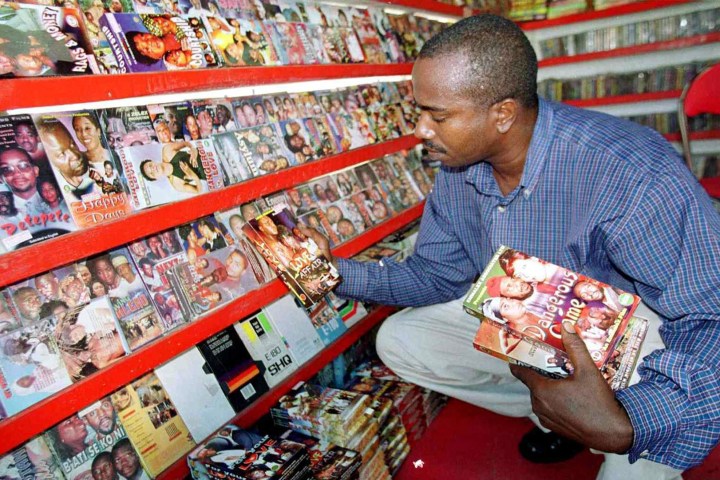
VHS can’t totally be credited with forging the viewing habits of a nation, but it most certainly helped. From the late 1980s onward, movie studios made more money from home video releases than they did in the theater. It marked the start of an age in which, at least as far as movies were concerned, home entertainment trumped entertainment you had to go out for. Video wasn’t where theatrical movies went to die; for many, many more people they were where they were first seen to begin with.
“1988 was the year in which video rentals and sales started to exceed box office returns for producers,” Caetlin Benson-Allott, Professor in the Faculty of Film and Media Studies at Georgetown University – and author of Killer Tapes and Shattered Screens — told Digital Trends. “That’s really the moment I think when Hollywood starts to realize, ‘Oh, we’re making videos.’ Bully for us if they do well in the theater, but theater is now sort of a loss-leader for video. It’s the advertising push to get people to remember the name of a title so that they’ll rent it as a video store.”
While VHS certainly gave plenty of opportunities for cult hits, ignored at the box office, to flourish, it also helped fan the flames of obsessive fandom in general. For example, movies like Star Wars are undoubtedly great in a crowded theater. However, it was video, where they could be endlessly rewatched and dissected, that helped solidify an almost religious reverence in the theater-free years between 1983’s Return of the Jedi and the Star Wars Trilogy Special Editions in 1997.
That internet-aided overanalysis of pop culture that leads to YouTube videos like “I Watched Avengers: Infinity War in 0.25x Speed and Here’s What I Found” (12 million views)? This is the legacy of VHS in action.
The paradox of choice, Blockbuster-style
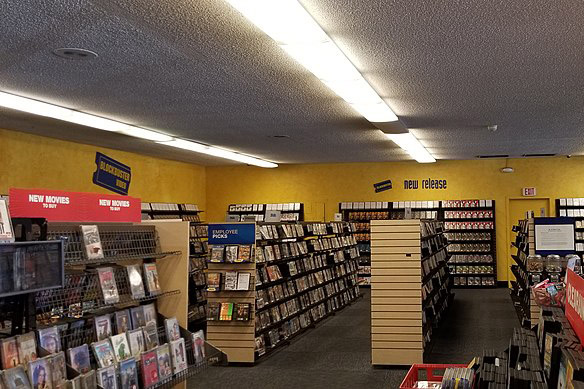
VHS prefigured our current choice-saturated streaming services in another way, too. That sense of aimlessly scrolling through endless possible viewing options, spending hours deciding on the movie we wanted to watch, was probably first experienced by those browsing the shelves in their local video rental store. It was the paradox of choice in action – and without today’s safety net.
“What I loved, and still love, about VHS is the cover art and the boxes,” Philip Baker, a 46-year-old collector of VHS tapes, who runs the website VideoCollector.co.uk, told Digital Trends. “[It’s] probably just nostalgia, but they have a certain x-factor about them. I love the illustrated covers, especially the likes of Enzo Sciotti, [that managed to] make some mediocre movies look amazing. Finding something worthy of the weekly rental was a huge gamble. These days, especially with the streaming services, they usually play you a preview, you’ve got an IMDB rating a few clicks away, [and] there are hundreds of titles available to watch instantly. Once you’ve started [a movie], if you don’t like it, you can stop it and find something else. Whereas if it was the VHS rental era — you’d paid your money. That was it: you’re watching it!”
There’s one other important factor to note when it comes to the forward-looking nature of VHS and its impact: Unlike the DVD, VHS was originally introduced as a recordable technology, instead of a playback-only one. Although DVD-R formats appeared on the market, far fewer people burned their own DVDs than ever recorded their own VHS tapes – either with the aid of an accompanying camcorder or simply by taping things off the television. This drive to make everyone participate in what Lucas Hilderbrand calls “a new kind of amateur archiving” feels perfectly at home in an age in which millions have their own YouTube channels, contribute to Wikis, track their viewing habits on Letterboxd, or simply chronicle their lives on social media.
For better or worse, VHS helped prepare us for a brave new world. All it asked was that we rewound the tape once we were done.
Life after death

VHS tapes continued to be produced until 2006. The last major Hollywood studio picture to be released on the format was A History Of Violence, amusingly enough directed by videotape-themed body horror Videodrome helmer David Cronenberg. VHS didn’t mark the end of the physical media era when it came to our viewing habits. It was, after all, followed by both the DVD and Blu-ray formats (the latter of which had its own Betamax vs. VHS-style scuffle with a rival format in the form of the short-lived HD DVD.)
But while VHS enjoyed unblemished cultural relevancy for a solid two decades before DVD came along, and more than a quarter-century before DVD took the sales lead in 2003, both DVD and Blu-ray were almost immediately overshadowed by the arrival of YouTube in 2005, digital movie downloads via iTunes and competing platforms, and ultimately streaming platforms.
Netflix started life in 1997, initially as a mail-order rental company – notably for DVDs instead of VHS tapes, since these were cheaper to mail. The economics of sending out a chunky VHS tape would never have added up, which in turn would mean that Netflix likely wouldn’t have been in the position to launch its streaming service – which it ultimately did in 2007, the year after the last VHS tapes were discontinued.
Today, it is the Netflixes and Disney Pluses of this world that have taken over the cultural position that VHS once enjoyed. While physical media still has its proponents, both for film and music, there’s no doubt that the times have moved on. VHS marked the beginning of the end – and, concluding just before the dawn of the smartphone, the last time that a considerable amount of the world’s entertainment wasn’t viewed by people sitting on the toilet.
Be kind, rewind
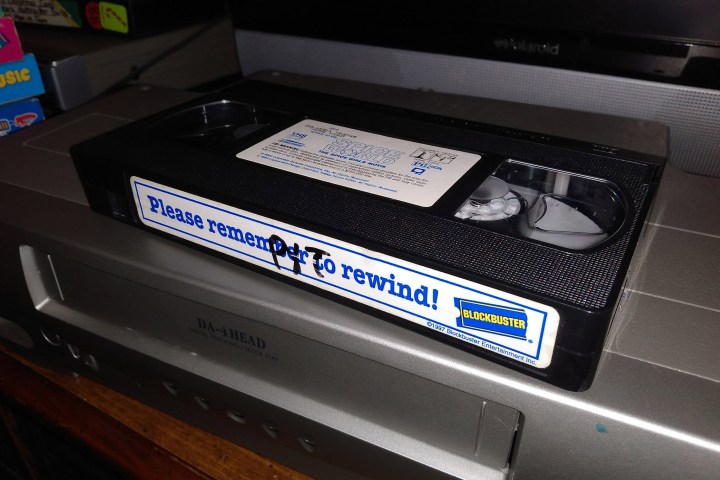
But is VHS entirely gone? In some ways it has. In others, though, the technology remains if not relevant then at least influential. There are, of course, the mega-collectors like Philip Baker, who estimates his own collection as “thousands, spread over a couple of locations.” (Although even he notes that, “I don’t actively collect anymore, because I’ve run out of space.”) However, while Baker might be an outlier, the video aesthetic remains deeply ingrained in our collective nostalgia.
In 2013, less than a decade after the VHS format was left for dead, Eminem’s “Berzerk” music video opened with the distinctive blue tracking screen and scanlines known to millions of VHS watchers across the world. The video made liberal use of VHS-style grain, skewed images at the top and bottom of the frame (an effect caused by distorted or stretched tapes), white “dropout” specks, and other bits of degradation immediately identifiable as VHS-era artifacts. Most understood the intention: Eminem, an artist who debuted at the cusp of the digital era, was spiritually siding with, or paying tribute to, the analog artists of yesteryear. He was a man of the VHS era.
This kind of visual language has become standard issue since then. The ghostly rainbow flares and muted sound of worn-down videotape images certainly seem to be the antecedent of similar “chopped and skewed” effects seen in oddball meme culture such as YouTube Poop videos. A type of degradation of picture and sound quality, once a source of annoyance to viewers, has now become the Millennial movie-fan equivalent of vinyl crackles: Something that now adds a sense of pre-digital warmth. If they have to be artificially added to wholly digital recordings … well, so be it!
VHS wasn’t perfect. The machines were bulky, as were the tapes, and they degraded upon subsequent viewings in a way that made them feel all too ephemeral. Nonetheless, they transformed the way that we view entertainment – and in a way that still feels strikingly modern. Whether you hanker for a return to the days of “be kind, rewind” or feel that the present streaming era is a true golden age, the impact of VHS can’t be understated.
Now if you’ll excuse me, to quote American Psycho, I’m off to return some videotapes.

